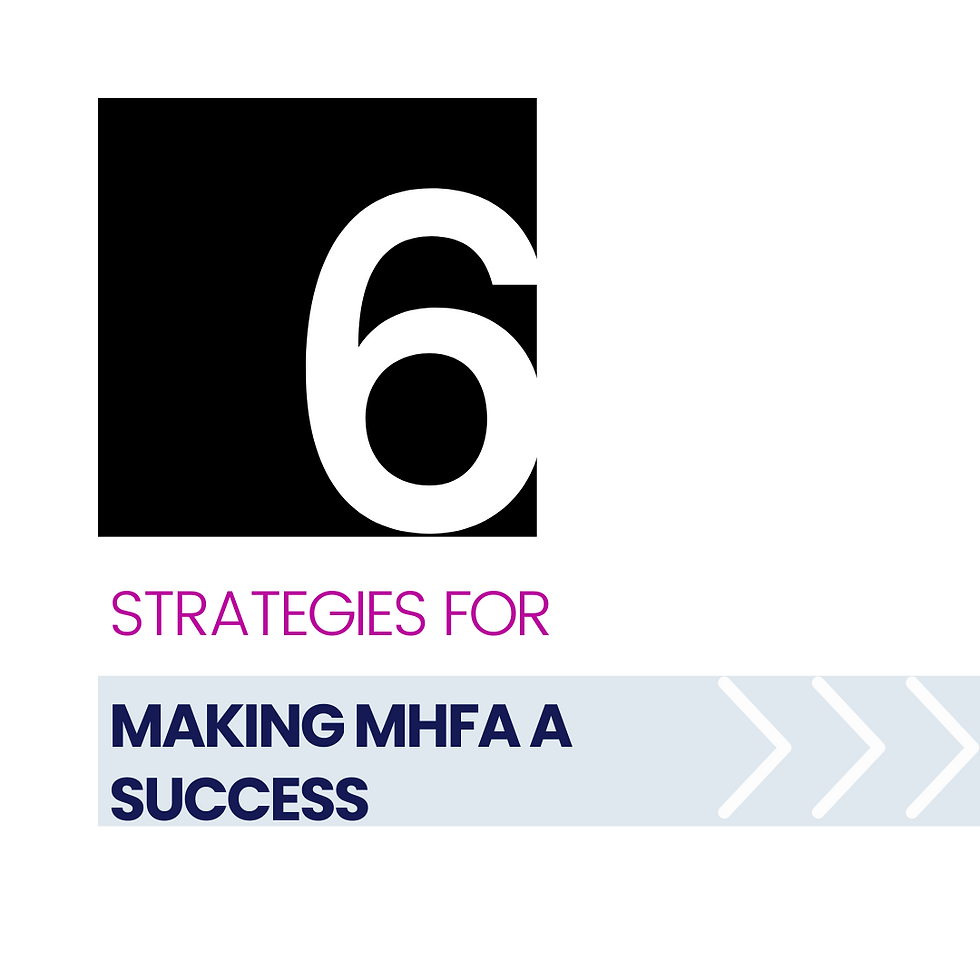Understanding OCD: Beyond Stereotypes and Into 10 Real-Life Themes
- Joanna Buckland

- Sep 6, 2023
- 4 min read
Updated: Jul 6
We've all heard the phrase, maybe even used it ourselves: "I'm a bit OCD." But let's take a moment to unpack why this casual remark can miss the mark and why understanding the true nature of obsessive-compulsive disorder (OCD) is so important.
When you think of OCD, what usually comes to mind?
Likely, it's an image of someone fixated on cleanliness or orderliness. That's the portrayal we often see in media, but the reality is far more complex.

Definitions of OCD explain how people can have obsessions in the form of unwanted intrusive thoughts, urges or images which someone feel they cannot control[i]. These obsessions can lead to significant distress when experienced on a daily basis and can be very difficult to control. To help manage, someone may adopt repetitive ‘safety behaviours’ in an attempt to reduce psychological distress. Behaviours may include hand washing, ordering objects in a particular way, continuous approval seeking or repetitive counting, and repeated checking tasks that are complete, to name a few[ii]. There is no doubt that OCD can be
debilitating, and symptoms often vary in intensity
and come and go[iii].
10 examples of OCD Themes
Often, people associate OCD with cleaning or keeping things in good order, but OCD can appear in many different forms.
Contamination Obsessions and Cleaning Compulsions: Fear of contamination by germs, dirt, or harmful substances, leading to compulsive behaviours such as excessive hand washing, cleaning, or avoiding certain places or objects.
Checking Obsessions and Compulsions: Persistent doubts or fears about safety or harm, leading to compulsive checking behaviours, such as repeatedly checking locks, appliances, or personal belongings.
Symmetry and Order Obsessions and Compulsions: A need for symmetry, exactness, or orderliness, leading to compulsive arranging, counting, or aligning objects until they feel "just right."
Intrusive Thoughts of Harm: Disturbing thoughts or images of causing harm to oneself or others, leading to compulsive behaviours aimed at preventing harm or seeking reassurance from others.
Religious or Moral Obsessions and Compulsions: Obsessions related to religious or moral beliefs, such as fears of committing sacrilegious acts or violating moral principles, leading to compulsive rituals or prayers to alleviate guilt or anxiety.
Hoarding Obsessions and Compulsions: Persistent difficulty discarding or parting with possessions, regardless of their actual value, leading to excessive accumulation of items and living spaces becoming cluttered and disorganised.
Sexual Obsessions and Compulsions: Intrusive sexual thoughts, images, or impulses that are distressing or unwanted, leading to compulsive behaviors such as seeking reassurance, avoidance of triggers, or mental rituals to neutralise the thoughts.
Health Anxiety Obsessions and Compulsions: Excessive worry about having or developing a serious illness, leading to frequent checking of symptoms, seeking medical reassurance, or avoiding situations perceived as risky for health.
Perfectionism Obsessions and Compulsions: A need for perfection or fear of making mistakes, leading to compulsive behaviors such as repeatedly rewriting or reworking tasks until they meet unrealistic standards.
Magical Thinking Obsessions and Compulsions: Belief that certain actions or thoughts can influence future events or prevent harm, leading to compulsive rituals or mental acts performed to ward off perceived threats or ensure safety.
These are just a few examples, and OCD can manifest in various other themes or combinations of obsessions and compulsions. People will experience OCD symptoms differently, but what is common is that when OCD is highly activated, it can seriously hijack an individual’s life. However, while the experience can be debilitating, there is another side to OCD.
Is There More to OCD? Unveiling a Hidden Potential
In my years of therapy working with clients presenting with OCD symptoms, I've noticed something intriguing: a distinct brain type seems to be at play. These individuals have a knack for thinking broadly, going beyond the usual bounds of thought.
That's where the "circuit break" technique comes in—a method I've developed to disrupt the cycle of obsessive thinking. It involves giving the brain multiple tasks to focus on simultaneously. For most people, three tasks are enough to stop the spiral of obsessive thoughts. But with OCD clients, it often takes more tasks to achieve the same result.
This got me thinking: Could OCD be the result of this unique brain type when it's working against us? It's a question I've explored with clients like Dan, and their insights shed light on the lesser-known aspects of living with OCD. To dive deeper into the topic and hear firsthand accounts from our clients, check out our blog post, 'Beyond Disorder: The Gift and Growth of OCD - Dan's story'. It's a candid look at OCD from an interview with one of our clients.
How we can help
If you are affected by the topics explored in this article, please reach out.
Our Training Programs
Our training team has a wide range of skills across sectors, all psychologically informed. We currently offer training courses, including Adult Mental Health First Aid, Youth Mental Health First Aid, and Tailored topics in stress and burnout. We can also provide training in any topics we support in our counselling practice. See Topics below.
Strategic Therapy
From stress, pressure, and burnout to relationship issues, breakups, anxiety, and depression, our comprehensive counselling service covers a wide range of topics essential for promoting mental health and overall wellbeing.
Topics we support our clients with include self-esteem, confidence, anger, grief and loss, sleep issues, anxiety, depression, OCD, workplace conflicts, imposter syndrome, perfectionism, social isolation, communication skills, boundaries, coping with change, resilience-building, mindfulness, body image, career transitions, financial stress, parenting challenges, caregiver stress, trauma and PTSD, balancing work and personal life, loneliness and isolation, emotion and nervous system regulation, assertiveness training, procrastination and motivation, positive psychology interventions, stress management techniques, relaxation exercises, conflict resolution skills, building healthy relationships, enhancing emotional a, and much awareness and much more.
Join us to explore these essentials to cultivate a healthier, more balanced life.




Comments